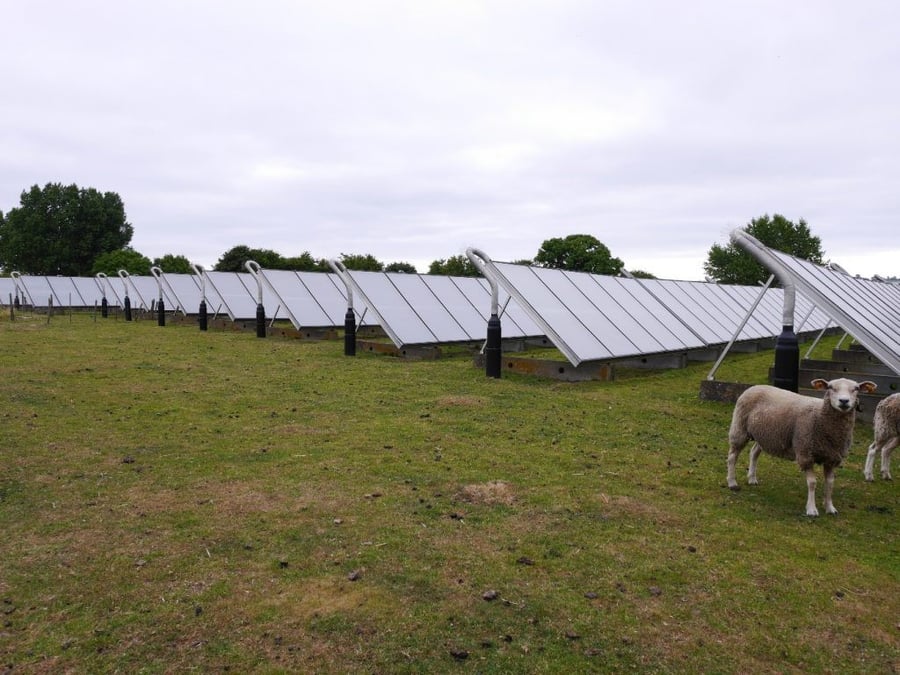
A Solar District Heating Plant
#MoveTheDate Solutions

Personal / Community: Community project
Energy sub-category: Power generation
Description: Since 1994, Marstal Fjernvarme has gradually started transitioning to a renewable energy system. Nowadays, the company provides heat to the settlement of Marstal from100% renewable energy sources. 50-55% comes directly from the solar heat collectors, 40% from wood chips, 2-3% from a heat pump. The heat pump takes advantage of the intermittencies in wind power production and is preferably put to work when an abundance of cheap wind energy is available. The remaining energy comes from the combustion of bio-based oil. The boiler is a co-generation burner that provides both heat and electricity. Solar heat, which is abundant in the summer months, is stored in two pit storage systems: Sunstore2 (10,000 m3) and Sunstore4 (75,000 m3).The case of Marstal Fjernvarme shows how different modes of energy production can be combined in a way which considers and taps into the potential of different technologies. Because of its innovative character, the project has won prizes and attracted significant media attention. The most apparent benefit provided by the project is the supply of sustainable energy to most of the 2000 Marstal inhabitants. This means that the environmental performance of the energy system improved considerably. At the same time, the inhabitants saved a lot of money due to the comparatively lower energy prices even though the current prices of Marstal Fjernvarme are slightly above the national average. This is quite an achievement considering that Marstal is located on an island which makes the transport of fuels more expensive. An additional economic benefit for the local community comes from the visitors that come to Ærø to learn more about the project. Annually, between two and four thousand people visit Marstal Fjernvarme, examples including members of the Ukrainian government.
Website about this solution: http://co2mmunity.eu/outputs/community-energy-cases
Why I love this solution: Two local inhabitants set the project in motion in the 1960s when they went door to door in Marstal to gather support for a citizen-owned local district heating system. When oil prices kept rising in the early 1990s, the chair of the board, the manager of Marstal Fjernvarme, and one of EnergiPlans owners initiated the energy transition in Marstal. The first solar heating system was installed at the local swimming pool. After showing promising results, the three men introduced the solar heating system for the local grid and were thus able to provide energy to households at a lower price.